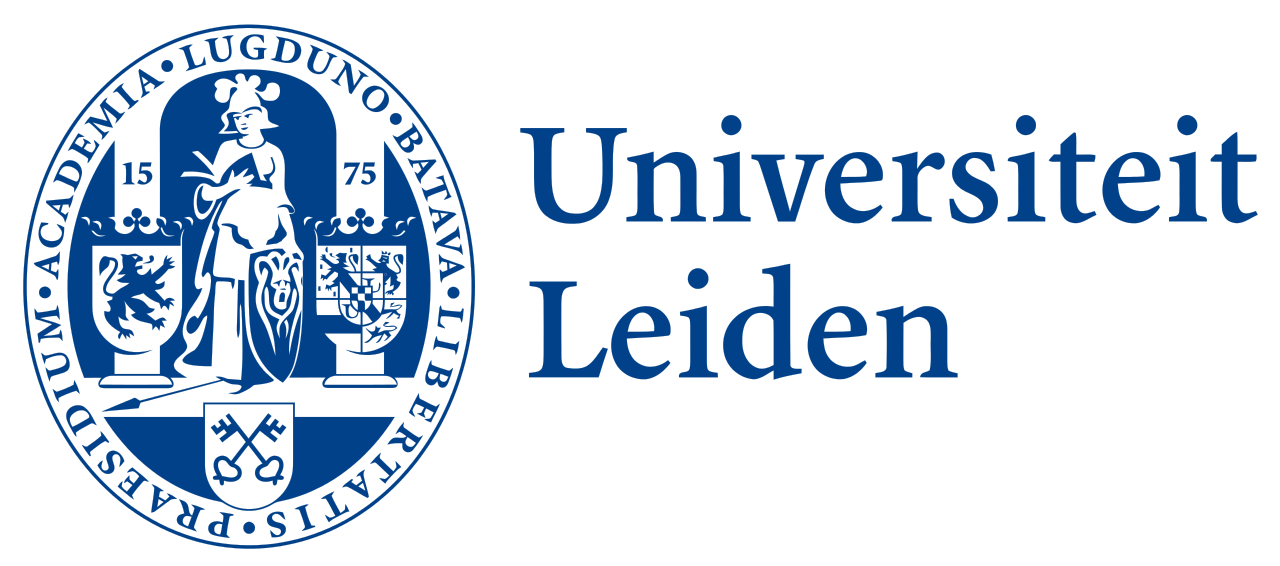Saxophone without Mouthpiece -
Phd Doctoral Research
Dr. Don-Paul Kahl earned his PhD in Artistic Research from Universiteit Leiden in The Netherlands. His doctoral work was completed in collaboration with the Academy of Creative and Performing Arts at Leiden University and the Orpheus Institute in Belgium.
He presented a lecture-recital on his research on 27 January 2025 at the Royal Conservatoire Den Haag and publicly defended his PhD thesis on 28 January 2025 at the Academiegebouw at Leiden University.
His research exists as a separate website and can be found at the following link:
Alternatively, you can access the written textual dissertation from the Leiden University Library Repository by clicking the following link:
His dissertation research topic is on Saxophone Without Mouthpiece.
Summary of Research: This thesis explores saxophone without mouthpiece (SWMP), an innovative approach to saxophone playing that challenges traditional performance practices. In SWMP playing, the instrument’s mouthpiece – an essential component for producing its conventional sound – is removed. Instead, the player performs directly on the neckpiece of the saxophone. This absence of the mouthpiece creates new sonic possibilities, giving rise to a range of relatively new techniques such as air pitch, tongue ram, trumpet sounds, and saxo-flute hybridity. These techniques, which have yet to be fully explored in both performance and academic spheres, prompted my early interest through initial encounters with composers incorporating them into their works. From this curiosity emerged an artistic research project aimed at understanding and refining my own skills with these techniques, contextualizing their origins and aesthetic position within music history, exploring their role in the broader saxophone repertoire, and investigating their potential in such a way that other performers as well as composers could benefit from it.
Some of the research questions that I sought to answer were: What is SWMP? What is the artistic, technical, and sonic potential of SWMP techniques? What is the historical background and context of these techniques? How do SWMP techniques fit into the interactive network formed by performers, composers, material, instruments, and notation? Can a more standardized notational model be proposed for these techniques that allows for a basis upon which composers can potentially expand? How can the relationship between composer and performer be more closely aligned in the notation of SWMP techniques in works that are intended to be passed from one performer to another?
In this thesis, the techniques are mostly investigated and evaluated through a practical lens, highlighting their sonic potential and defining their technical parameters. Additionally, I examine notational practices associated with SWMP techniques, and I propose a more uniform notational framework which may facilitate greater acceptance of these techniques among composers and enhance performers’ comprehension. Hence designed for saxophonists, composers, pedagogues, and researchers, this thesis offers a comprehensive analysis of SWMP, its contextual foundations, its technical execution, and the challenges of its notation.
In Chapter One, I contextualize SWMP by situating it within a broader historical and aesthetic framework and trace its evolution and integration into contemporary saxophone practices. Its roots can be found in the 1920s and 1930s, a period when saxophonists in vaudeville and dance bands experimented with various extended techniques. During this time, musicians invented saxophone “tricks,” including the “bugle-effect,” a technique akin to the modern trumpet sound technique. Some of these “tricks” have persisted through history, while others faded or merged with related techniques. SWMP techniques, as we know them today, were formally developed much later, particularly in the 1980s. Main contributors are saxophonists such as Daniel Kientzy, Jean-Marie Londeix, Marie-Bernadette Charrier, and Marcus Weiss, among others, who were instrumental in formalizing the SWMP techniques.
In the same chapter, I relate SWMP to broader musical, aesthetic, and philosophical developments. The rise of experimental music and the “sonic turn” – a shift in emphasis from traditional musical elements like melody and harmony to sound itself – provided fertile ground for the development of new saxophone techniques, including SWMP. The chapter references key aesthetic movements, such as Luigi Russolo's The Art of Noises (1913), which advocated for incorporating everyday and industrial sounds into music. Similarly, Edgard Varèse's manifesto The Liberation of Sound (1966) championed a break from traditional musical constraints, promoting the use of new sounds, including those made possible through electronic instruments and extended techniques. Also, Helmut Lachenmann's concept of musique concrète instrumentale is relevant in this respect, as it merges traditional instrumental techniques with the aesthetics of musique concrète and focuses on the physicality of sound production. Russolo's introduction of non-traditional sounds into music, Varèse’s emphasis on the materiality of sound, its timbres and textures, and Lachenmann’s idea that the act of producing sound is often as significant as the sonic results, supports the idea that SWMP techniques are not merely technical curiosities but part of a broader historical, artistic, practical, and theoretical exploration of sound and music.
Chapter One ends with an overview of the main saxophonists, improvisers, and composers who have contributed to the development of SWMP. Furthermore, I provide analyses of two improvisations and two prominent SWMP works. As such, this chapter lays the groundwork for the detailed technical and performance analyses that follow in subsequent chapters.
In Chapters Two through Five, I investigate each of the four primary techniques in detail: air pitch, tongue ram, trumpet sounds, and saxo-flute hybridity. Each chapter is comprised of videos in which I demonstrate the techniques, and contains the following subsections: description, technical parameters, performance and practice, personal development, and pedagogy. In the description section, I explain what each technique involves, providing short examples of how to produce its specific sound. The technical parameters section addresses essential details such as range, transposition, and embouchure, and offers a review of existing literature. The performance and practice section explores various factors that influence a successful execution of the technique, such as articulation, glissandi, dynamic ranges, the barrissement technique (for trumpet sounds), or changing vowel shapes (for air pitch), etc. The personal development section offers guidance on how saxophonists can build proficiency with each technique, while the pedagogy section provides teachers with practical insights on how to teach these techniques. Each chapter is supported by demonstration videos, transposition charts, and a pitch manual specific to the technique being discussed. The demonstration videos serve as quick references, showing me performing the techniques in various ways, including transitions between techniques, with brief accompanying texts to offer additional information. These chapters are crucial for gaining a deep understanding of the SWMP techniques, and they provide a comprehensive resource for saxophonists, composers, and educators.
After exploring the four techniques in detail, the main topic addressed in Chapter Six is the issue of how to notate SWMP techniques. As this topic has long been a subject of debate, I found it necessary to examine the various notational practices used for SWMP, trace their evolution over time, analyze what the notation communicates to a performer, and offer guidelines for composers looking to incorporate SWMP techniques into their work. The chapter begins with a discussion about composers’ notational choices. In the 20th and 21st centuries, they have not only continued the evolution of notational practices to suit their needs but by doing so have introduced entirely novel and individualistic approaches to notation. While these approaches can often enhance the artistic depth of a work, facilitate the performance and creation of novel and unheard sounds, and offer performers the opportunity to adapt to new signs and symbols, notation must also be clear and efficient, so that a performer may interpret those signs and symbols more or less according to the composer’s intentions. Drawing on the contributions of several authors, including Karkoschka, Toop, Fairbairn, Taruskin, Duncan, and Assis, I explore ideas surrounding notation and the vast artistic possibilities afforded by its diversity. On the basis of this exploration a few important observations are made. Firstly, despite several attempts to standardize notation, composers always find novel ways of notating their sonic ideas. Second, many authors agree that notation of complex scores should be appropriate to the music it represents. Therefore, the ongoing flux of notational diversity has resulted in a rich and multifaceted exploration. This evolution both frustrates (as in the case of Taruskin) and encourages (as in the case of Fairbairn) artistic expression. However, in my opinion, notation is first of all intended to communicate sounds through signs and symbols so that the musician can interpret and, ultimately, perform them.
I have sought to uncover a certain consistency in notating these techniques. A performer often bears the responsibility to interpret a score to the best of their abilities, presenting a physical manifestation of a meta-physical phenomenon that they must engage with through rigorous daily practice. In this process, they will make certain decisions based on previously learned and embodied experiences. In order to smoothen this process, I present a set of notational guidelines that composers may choose to adopt when writing for SWMP. These guidelines address common notational challenges and provide both general and specific recommendations for notating each technique. Systems of standardization, while not mandatory, can normalize new techniques, enrich artistic expression, and minimize confusion between performers and composers. A certain standardization can be beneficial for composers, and also help performers connect to the techniques, allowing for more fluid interpretations and helping them reach the artistic potential envisioned for them. In this respect, I also argue for a closer collaboration between composers and performers, referencing Roland Barthes’ seminal text “The Death of the Author” (1967), which advocates for a more dynamic relationship between a work's creator and its interpreter who actually is its co-creator.
This research project has taken place in and through my own musical practice. Therefore, it is complemented with personal audio and video performances of various SWMP works. The performances of these works are a crucial element in the possibility of having done (and having been able to do) this research in the first place. The true outcome of this artistic research project lies in successful performances, recordings, and commissions of SWMP works. Additionally, a detailed pitch manual, featuring audio examples of each possible pitch for each respective technique, is included. It is in and through my own artistic practice that I came to the idea that this pitch manual is indispensable. I have also included a repertoire list that shows the growing body of works by composers writing for SWMP and inserted videos of interviews I have conducted with several composers who have written for SWMP and one saxophonist (on her research into early saxophone methods).



